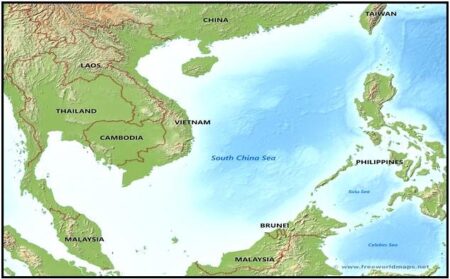In a strategic move aimed at bolstering its export sector, India is reportedly considering a meaningful reduction in tariffs on over fifty percent of imports from the United States, as revealed by sources familiar with the discussions.This shift, driven by an intent to enhance competitiveness in global markets, comes amid ongoing trade negotiations and reflects India’s determination to address trade imbalances while fostering stronger economic ties with one of its largest trading partners. As world economies navigate the complexities of post-pandemic recovery, this potential tariff adjustment underscores India’s proactive approach to trade policy and its implications for bilateral relations with the U.S. In this article,we delve into the motivations behind India’s proposed tariff cuts,potential impacts on industries,and reactions from stakeholders in both countries.
indias Strategic Shift to Tariff Reductions: Implications for Bilateral Trade Relations

In a significant policy shift, India is reportedly set to reduce tariffs on more than half of its imports from the United States, a move intended to bolster its own export competitiveness while navigating global trade dynamics. The decision highlights India’s strategic prioritization of nurturing bilateral trade relations while addressing internal economic pressures. By lowering tariffs, India aims to make its products more attractive in international markets, possibly increasing its market share and driving economic growth. This shift can be seen as a calculated strategy to enhance cooperation with the US while positioning India as a vital player in the broader trade landscape.
The implications of this tariff reduction are manifold. Key outcomes may include:
- Increased exports: Indian manufacturers could find greater opportunities in the US market, especially in sectors such as textiles, electronics, and automotive parts.
- Strengthened relations: A proactive approach to tariffs may foster goodwill between the two nations, encouraging collaborative efforts on other trade and economic fronts.
- Potential market shifts: The change may prompt other countries to reconsider their tariff policies with India,leading to broader trade negotiations and enhancing India’s global trade position.
Though, the success of this initiative will depend on India’s ability to balance the demands of domestic industries with the need for greater international competitiveness.
impact on Key Sectors: Analyzing How Tariff Cuts Could Benefit Indian Exports

The proposed tariff cuts on over half of US imports are expected to provide a significant boost to key sectors within India, fostering a more competitive landscape for its exporters. Among the most affected industries, textiles, automobiles, and electronics stand to gain tremendous advantages. By reducing the import costs of raw materials and components, these sectors can enhance their production efficiencies and ultimately lower prices for consumers. In turn, this could lead to increased demand both domestically and in international markets.
Moreover, agriculture and pharmaceuticals are also poised for potential growth. The reduction in tariffs could streamline the supply chains for agricultural products, ensuring fresher goods reach global markets more efficiently. Similarly, Indian pharmaceutical companies could leverage lower import costs for raw materials to bolster their competitive edge in the global arena. The overall impact could be transformative, promoting an ecosystem in which Indian exports thrive across various sectors. Below is a summary table highlighting these key sectors and the expected benefits:
| Sector | Expected benefits |
|---|---|
| Textiles | Lower production costs, increased demand |
| Automobiles | Enhanced competitiveness, lower prices |
| Electronics | Improved efficiencies, better market access |
| Agriculture | Streamlined supply chains, fresher exports |
| Pharmaceuticals | Lower raw material costs, global competitive edge |
Balancing Trade dynamics: Recommendations for Strengthening US-India Economic Partnerships

To enhance the economic relationship between the United States and India,a multi-faceted approach is necessary. First and foremost, both nations should engage in dialog to address trade barriers that hinder mutual growth. This can include:
- Streamlining Regulations: Simplifying import-export protocols can facilitate smoother trade flows.
- Negotiating Tariff Reductions: A phased reduction in tariffs on critical goods would encourage reciprocal market access.
- Fostering Collaboration: Joint ventures in technology and innovation sectors can lead to shared economic gains.
Moreover, increasing investments in key industries such as renewable energy, pharmaceuticals, and details technology could serve as a foundation for sustained economic growth. Establishing bilateral investment treaties can provide security and incentivize American companies to invest in Indian markets. Additionally, regular trade summits will provide a platform for businesses from both countries to discuss emerging opportunities and strengthen commercial relationships. A structured approach that includes:
| Area of Focus | Potential Benefits |
|---|---|
| Trade Agreements | Elimination of tariffs leading to lower prices |
| Technology Exchange | Enhanced innovation and productivity |
| Market Access | Increased sales for both US and Indian products |
Future Prospects: Navigating the Challenges of Implementing Tariff Reforms in a Global Context

The landscape of international trade is evolving rapidly, and countries must adapt to the shifting dynamics of tariff policies to maintain competitiveness. In the context of India’s potential move to lower tariffs on more than half of U.S.imports, several challenges arise that must be navigated carefully. These include the potential implications for domestic industries, which may face increased competition from foreign goods, as well as negotiations around reciprocal concessions that could impact the trade balance. Business sectors will need to assess the long-term effects of such reforms, notably how they influence supply chains, pricing strategies, and overall market stability.
Furthermore, India’s approach to tariff reform will not only be shaped by domestic priorities but also by global economic trends. This includes the response from the U.S. and other trading partners, who may either perceive this as a willingness to collaborate or as a threat to their own market share. The following factors will play a crucial role in determining the trajectory of these reforms:
- Bilateral Relations: Fostering stronger ties through mutual tariff reductions.
- Domestic Industry Protection: ensuring that local businesses can compete effectively.
- Trade Agreements: Aligning tariffs with regional and international accords.
- Economic Stability: Maintaining a balance between import liberalization and domestic economic health.
| aspect | Implication |
|---|---|
| Import Tariffs | Possible reduction to promote trade |
| Domestic Market | Need for policies to support local industries |
| Trade Relations | Pursuing new partnerships and agreements |
Insights and Conclusions
India’s strategic move to reduce tariffs on a significant portion of U.S. imports reflects its commitment to safeguarding its export market amid ongoing global trade tensions. As the world’s third-largest economy seeks to enhance its competitive edge, this potential policy shift could foster a more favorable trade environment between the two nations. Policymakers and industry stakeholders will be closely monitoring developments in this regard,as the outcome may have broader implications not only for bilateral relations but also for the global economic landscape at large.As discussions continue, the focus remains on balancing domestic interests while promoting international trade partnerships. For further updates, stay tuned to our reporting.







